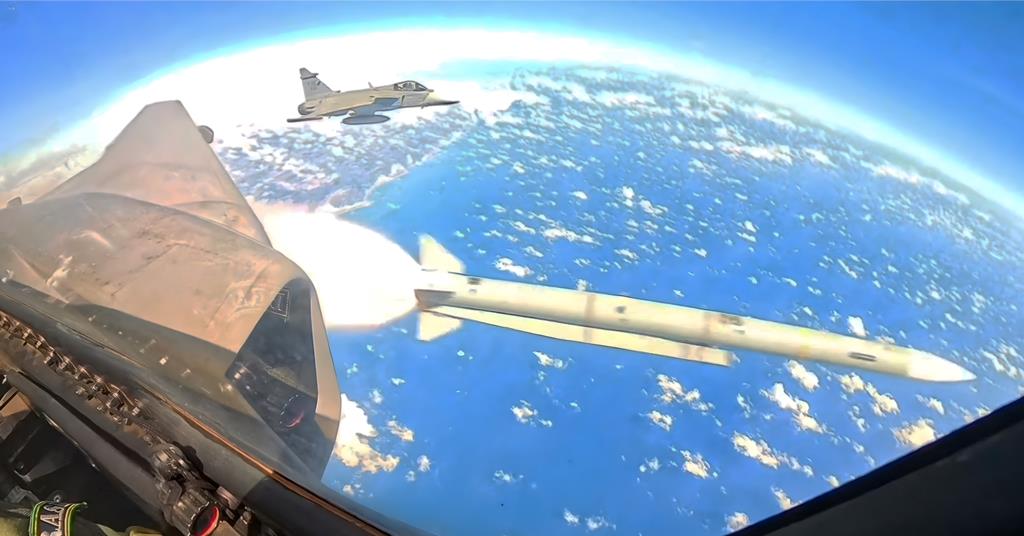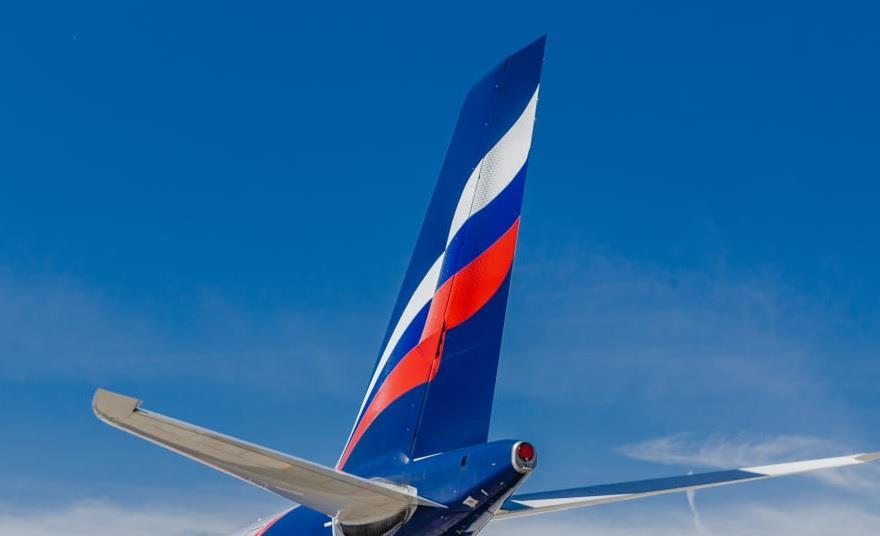The UK government has published its eagerly-awaited Strategic Defence Review (SDR), with the 140-page document indicating an array of military priorities for the coming decade but providing limited detail about many future investment decisions.
Published on 2 June, the review is intentionally light on specific platform detail regarding procurement plans, officials say. Instead, content around an expected further buy of the Lockheed Martin F-35, a mid-life upgrade for the Royal Air Force’s (RAF’s) Eurofighter Typhoon fleet, and London’s ongoing commitment to the three-nation Global Combat Air Programme (GCAP) should be disclosed later this year.
UK defence secretary John Healey says such topics will be contained within a new Defence Investment Plan, which is to be completed “this autumn”. That will follow the outcome of the government-wide Spending Review next week, which will finalise departmental budgets.
Four pages of the SDR report are dedicated to the ‘Air domain’. Within this, the government pledges to “create a next-generation RAF, with F-35s, upgraded Typhoons, next-generation fast jets through the Global Combat Air Programme, and autonomous fighters to defend Britain’s skies and strike anywhere in the world”.
The GCAP activity is being advanced jointly by the UK with Italy and Japan, with the partners aiming to field a sixth-generation manned fighter from 2035.
“Over the next two decades, the UK and its allies will have to compete harder for control of the air,” the report states, while adding: “the primacy of crewed aircraft is being fundamentally challenged”.
“Although the quality of RAF capability is unquestionable, its lean size reflects the requirements of a post-Cold War era, centred on counter‑terrorism, counter-insurgency, and air policing. With the return of state‑on-state conflict in Europe, the RAF must improve its productivity, agility, and adaptability to build greater readiness and resilience,” it says.
With this in mind, the report’s independent authors state within their recommendations: “To assure the future of UK combat air, investment in autonomous collaborative platforms (ACPs) should be considered alongside investment in FCAS [Future Combat Air System] and the Global Combat Air Programme.
“The ACPs must be designed to operate in collaboration with the fourth-, fifth- and future generations of combat aircraft and to operate from the UK aircraft carriers,” they add.
“More F-35s will be required over the next decade. This could comprise a mix of F-35A and B models according to military requirements to provide greater value for money,” their recommendations state.
While not referred to within the published report, sources suggest that a future acquisition of the conventional take-off and landing (CTOL) version of the F-35 could enable the UK to strengthen its strategic deterrent by reinstating the ability to air-drop nuclear weapons.
The UK has so far fully committed to purchasing 48 short take-off and vertical landing (STOVL) F-35Bs, but as a Level One partner on the programme, its long-held programme of record requirement for the fifth-generation type stands at 138 units.
Compared against the STOVL model now operated by the RAF and Royal Navy (RN), the CTOL F-35A can fly further, carry more weaponry, has improved manoeuvrability and costs less to acquire.
An acquisition of the F-35A could open the way for the UK to join NATO’s dual-capable aircraft programme, which would see European assets armed with US B61 nuclear weapons. Notably, Germany’s 35-aircraft acquisition of the F-35A is being made to satisfy such a commitment to the western military alliance.
More broadly, the UK aims to strengthen its nuclear deterrent via major investments for the RN in Dreadnought-class submarines and missiles featuring a new “sovereign warhead” named ASTRAEA.
Meanwhile, the report claims: “We will provide leadership in NATO, by transforming our aircraft carriers to become the first European hybrid air wings – with fast jets, long-range weapons, and drones”, such as ACPs.
“Plans for the hybrid carrier air wings should also include long-range precision missiles capable of being fired from the carrier deck,” the report states.
The RN has two Queen Elizabeth-class aircraft carriers, with HMS Prince of Wales currently involved in an eight-month Carrier Strike Group 25 deployment which will see it visit locations including the Mediterranean, India, Malaysia, Singapore and the USA.
Meanwhile, “More airborne early warning and control (AEW&C) aircraft and ground-based radar would enable the UK to maintain round-the-clock surveillance in support of UK and NATO offensive and defensive operations,” the report says.
“There may be opportunities for cost-sharing with NATO allies in procuring more Boeing E-7 Wedgetail AEW&C aircraft,” it adds. The RAF in expected to take delivery later this year of its first of only three of the 737NG-based surveillance assets, with a previous defence review having slashed its originally five-unit acquisition.
The service’s incoming fleet of General Atomics Aeronautical Systems Protector RG1 remotely piloted air systems also should be considered candidates for “a maritime surveillance capability, integrated with [Boeing] P-8 Poseidon maritime control and reconnaissance aircraft and [Royal Navy] Type 26 frigates”, the report’s authors suggest.
And in the tactical airlift arena, it should explore “Augmenting the existing fleet of [22 Airbus Defence & Space] A400M with either more A400M, civilian charter, and/or sponsored service options, reducing routine demand on RAF air transport that does not require military capability”.
The UK has a 22-strong fleet of the A400M Atlas, but has previously identified a potential follow-on requirement for an undisclosed number of additional airlifters.
Such a development would also enable the MoD to reduce its reliance on RAF Brize Norton in Oxfordshire as its primary air transport hub.
Additionally, the “[BAE Systems] Hawk T1 and Hawk T2 should be replaced with a cost‑effective fast jet trainer,” the recommendations state, without suggesting potential candidates. “The current flying training arrangements for fast jets must be urgently revised to optimise capacity, building in maximum use of contractors and provision for training overseas students,” they continue.
Hawk T1s operated by the RAF’s Red Arrows aerobatic display team are currently due to leave service in 2030, while the 28 Hawk T2s acquired as part of its Military Flying Training System have suffered from poor availability, especially regarding their Rolls-Royce and Safran-supported Adour engines.
London’s latest review comes against a backdrop of increased defence spending in the UK, with the government already having boosted investment by £5 billion ($6.7 billion) this year. It has pledged to grow this further, from around 2.3% of the nation’s gross domestic product currently to 2.5% in 2027, and aspires to achieve a 3% level by the mid-2030s.
The government notes that its focus is ‘NATO first, but not NATO only’, while its expectation is that the USA will decrease its defence presence in Europe over the coming years, as the alliance’s leading player “adapts its regional priorities”.
“As the US confronts the unprecedented challenge of facing two near-peer nuclear powers, Russia and China, the UK must explore how to support the US and its NATO allies in strengthening extended deterrence across the Euro-Atlantic,” it says.
Also as part of the SDR process, the government has pledged to “create a new Defence Exports Office in the Ministry of Defence to drive exports to our allies and growth at home”.
![]() Beaphoenix WebDesign ltd
Beaphoenix WebDesign ltd


The UK government has published its eagerly-awaited Strategic Defence Review (SDR), with the 140-page document indicating an array of military priorities for the coming decade but providing limited detail about many future investment decisions.
Published on 2 June, the review is intentionally light on specific platform detail regarding procurement plans, officials say. Instead, content around an expected further buy of the Lockheed Martin F-35, a mid-life upgrade for the Royal Air Force’s (RAF’s) Eurofighter Typhoon fleet, and London’s ongoing commitment to the three-nation Global Combat Air Programme (GCAP) should be disclosed later this year.
UK defence secretary John Healey says such topics will be contained within a new Defence Investment Plan, which is to be completed “this autumn”. That will follow the outcome of the government-wide Spending Review next week, which will finalise departmental budgets.
Four pages of the SDR report are dedicated to the ‘Air domain’. Within this, the government pledges to “create a next-generation RAF, with F-35s, upgraded Typhoons, next-generation fast jets through the Global Combat Air Programme, and autonomous fighters to defend Britain’s skies and strike anywhere in the world”.
The GCAP activity is being advanced jointly by the UK with Italy and Japan, with the partners aiming to field a sixth-generation manned fighter from 2035.
“Over the next two decades, the UK and its allies will have to compete harder for control of the air,” the report states, while adding: “the primacy of crewed aircraft is being fundamentally challenged”.
“Although the quality of RAF capability is unquestionable, its lean size reflects the requirements of a post-Cold War era, centred on counter‑terrorism, counter-insurgency, and air policing. With the return of state‑on-state conflict in Europe, the RAF must improve its productivity, agility, and adaptability to build greater readiness and resilience,” it says.
With this in mind, the report’s independent authors state within their recommendations: “To assure the future of UK combat air, investment in autonomous collaborative platforms (ACPs) should be considered alongside investment in FCAS [Future Combat Air System] and the Global Combat Air Programme.
“The ACPs must be designed to operate in collaboration with the fourth-, fifth- and future generations of combat aircraft and to operate from the UK aircraft carriers,” they add.
“More F-35s will be required over the next decade. This could comprise a mix of F-35A and B models according to military requirements to provide greater value for money,” their recommendations state.
While not referred to within the published report, sources suggest that a future acquisition of the conventional take-off and landing (CTOL) version of the F-35 could enable the UK to strengthen its strategic deterrent by reinstating the ability to air-drop nuclear weapons.
The UK has so far fully committed to purchasing 48 short take-off and vertical landing (STOVL) F-35Bs, but as a Level One partner on the programme, its long-held programme of record requirement for the fifth-generation type stands at 138 units.
Compared against the STOVL model now operated by the RAF and Royal Navy (RN), the CTOL F-35A can fly further, carry more weaponry, has improved manoeuvrability and costs less to acquire.
An acquisition of the F-35A could open the way for the UK to join NATO’s dual-capable aircraft programme, which would see European assets armed with US B61 nuclear weapons. Notably, Germany’s 35-aircraft acquisition of the F-35A is being made to satisfy such a commitment to the western military alliance.
More broadly, the UK aims to strengthen its nuclear deterrent via major investments for the RN in Dreadnought-class submarines and missiles featuring a new “sovereign warhead” named ASTRAEA.
Meanwhile, the report claims: “We will provide leadership in NATO, by transforming our aircraft carriers to become the first European hybrid air wings – with fast jets, long-range weapons, and drones”, such as ACPs.
“Plans for the hybrid carrier air wings should also include long-range precision missiles capable of being fired from the carrier deck,” the report states.
The RN has two Queen Elizabeth-class aircraft carriers, with HMS Prince of Wales currently involved in an eight-month Carrier Strike Group 25 deployment which will see it visit locations including the Mediterranean, India, Malaysia, Singapore and the USA.
Meanwhile, “More airborne early warning and control (AEW&C) aircraft and ground-based radar would enable the UK to maintain round-the-clock surveillance in support of UK and NATO offensive and defensive operations,” the report says.
“There may be opportunities for cost-sharing with NATO allies in procuring more Boeing E-7 Wedgetail AEW&C aircraft,” it adds. The RAF in expected to take delivery later this year of its first of only three of the 737NG-based surveillance assets, with a previous defence review having slashed its originally five-unit acquisition.
The service’s incoming fleet of General Atomics Aeronautical Systems Protector RG1 remotely piloted air systems also should be considered candidates for “a maritime surveillance capability, integrated with [Boeing] P-8 Poseidon maritime control and reconnaissance aircraft and [Royal Navy] Type 26 frigates”, the report’s authors suggest.
And in the tactical airlift arena, it should explore “Augmenting the existing fleet of [22 Airbus Defence & Space] A400M with either more A400M, civilian charter, and/or sponsored service options, reducing routine demand on RAF air transport that does not require military capability”.
The UK has a 22-strong fleet of the A400M Atlas, but has previously identified a potential follow-on requirement for an undisclosed number of additional airlifters.
Such a development would also enable the MoD to reduce its reliance on RAF Brize Norton in Oxfordshire as its primary air transport hub.
Additionally, the “[BAE Systems] Hawk T1 and Hawk T2 should be replaced with a cost‑effective fast jet trainer,” the recommendations state, without suggesting potential candidates. “The current flying training arrangements for fast jets must be urgently revised to optimise capacity, building in maximum use of contractors and provision for training overseas students,” they continue.
Hawk T1s operated by the RAF’s Red Arrows aerobatic display team are currently due to leave service in 2030, while the 28 Hawk T2s acquired as part of its Military Flying Training System have suffered from poor availability, especially regarding their Rolls-Royce and Safran-supported Adour engines.
London’s latest review comes against a backdrop of increased defence spending in the UK, with the government already having boosted investment by £5 billion ($6.7 billion) this year. It has pledged to grow this further, from around 2.3% of the nation’s gross domestic product currently to 2.5% in 2027, and aspires to achieve a 3% level by the mid-2030s.
The government notes that its focus is ‘NATO first, but not NATO only’, while its expectation is that the USA will decrease its defence presence in Europe over the coming years, as the alliance’s leading player “adapts its regional priorities”.
“As the US confronts the unprecedented challenge of facing two near-peer nuclear powers, Russia and China, the UK must explore how to support the US and its NATO allies in strengthening extended deterrence across the Euro-Atlantic,” it says.
Also as part of the SDR process, the government has pledged to “create a new Defence Exports Office in the Ministry of Defence to drive exports to our allies and growth at home”.
Source link
Share This:
admin
Plan the perfect NYC Memorial Day weekend
Pack only what you need and avoid overpacking to streamline the check-in and security screening…
LA’s worst traffic areas and how to avoid them
Consider using alternative routes, such as Sepulveda Boulevard, which runs parallel to the 405 in…
Brazil test fires MBDA Meteor missiles from Gripen E fighter in major milestone
Brazil has notched a major milestone in its campaign to phase in Saab’s latest Gripen…
Aeroflot Group discloses acquisition of 747 and 737 freighters
Aeroflot Group has disclosed that eight aircraft – including freighters – have been introduced to…
Airbus cuts full-year delivery target by 30 aircraft
Airbus has cut its full-year delivery target to 790 commercial aircraft, down from the original…
Hi Fly claims Antarctic first with A330 follow-up to A340 landing
Portuguese wet-lease specialist Hi Fly has flown an Airbus A330-300 to Antarctica, claiming a first…
Austria to field 12-strong Leonardo M-346FA fleet from 2028 under $1.75 billion deal
Austria has finalised a roughly €1.5 billion ($1.75 billion) deal that will lead to its…
Avincis and DHC partner on CL-series waterbomber support
Aerial services provider Avincis is to collaborate with De Havilland Canada (DHC) on a series…
MBDA Meteor missile integration nears flight-test phase with Lockheed Martin’s stealthy F-35A
MBDA’s Meteor beyond-visual-range air-to-air missile has moved a step closer to commencing flight trials with…
Jekta hydrogen-electric amphibian aircraft scale model testing begins January 2024
Swiss start-up Jekta plans next month to begin flight testing a scale model of the…
Sikorsky S-92 engine failure caused by maintenance lapse, Norwegian investigators find
Norwegian investigators believe an unspecified maintenance issue was the likely cause of an in-flight engine…
PD-8 engine tested for performance in torrential rain
United Engine has carried out further water-ingestion tests on the PD-8 engine for the Yakovlev…